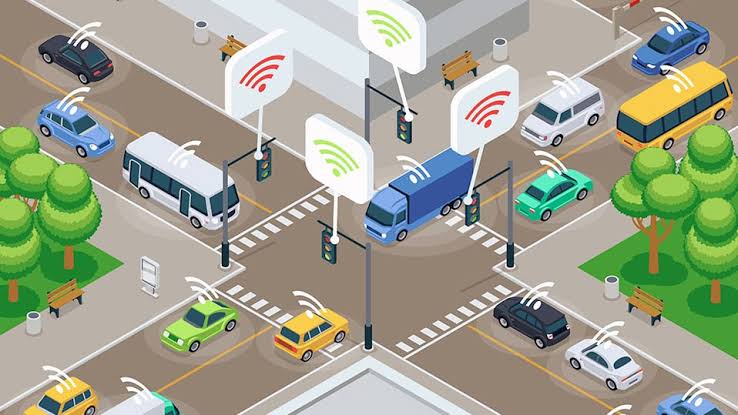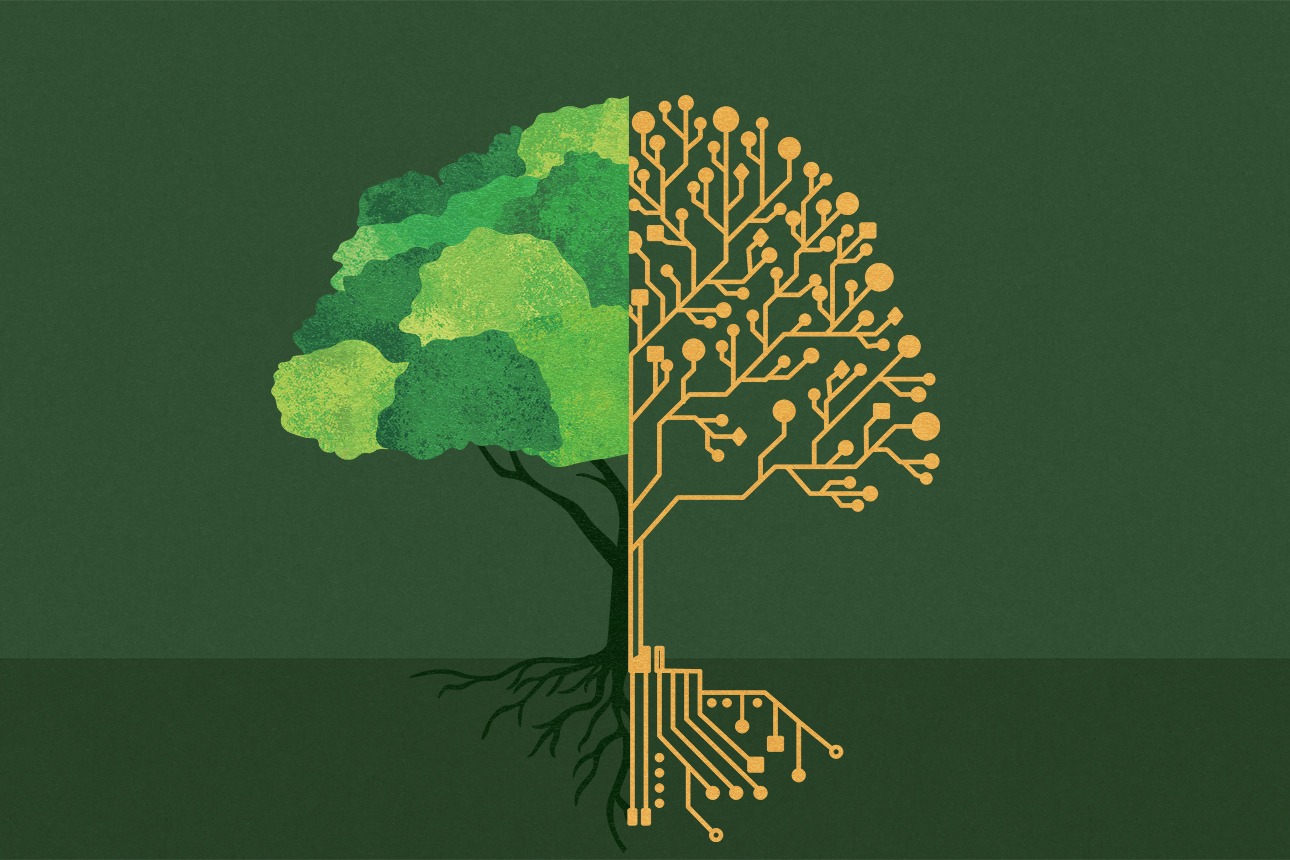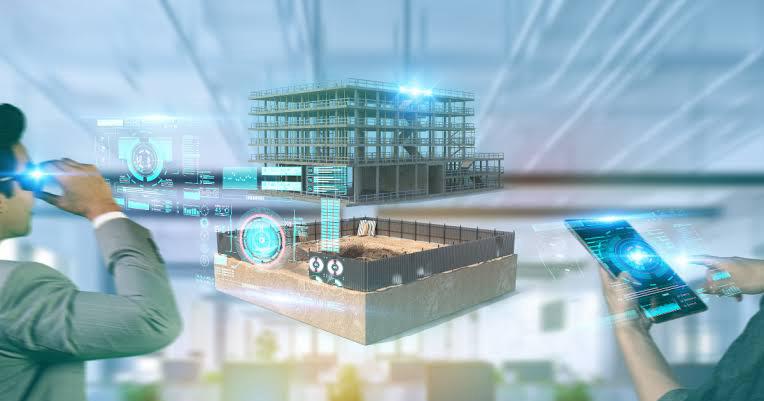
Smart Transportation Systems and Self-Driving Cars
Smart Transportation Systems and self-driving cars are revolutionizing how we travel by combining sensors, AI, and connectivity to enhance safety, efficiency, and sustainability. These technologies reduce traffic congestion, lower emissions, and improve public transit integration. Despite challenges like regulation and technology limits, they promise reshaped urban environments with safer roads and smarter mobility.
✨ Raghav Jain

Introduction
Transportation is the backbone of modern society, connecting people, goods, and services across cities and countries. But as urban populations grow and environmental concerns rise, traditional transport methods face challenges like traffic congestion, pollution, and accidents. Enter Smart Transportation Systems and Self-Driving Cars—technologies revolutionizing how we move safely, efficiently, and sustainably.
Smart transportation leverages digital technology, artificial intelligence (AI), and connectivity to optimize traffic flow and transit options. Meanwhile, self-driving cars promise to reduce human error, lower emissions, and transform daily commutes into productive or relaxing experiences.
In this article, we explore how smart transportation and autonomous vehicles work, their benefits, challenges, and what the future holds. Whether you’re a tech enthusiast, commuter, or policymaker, understanding this shift is vital as the world moves toward intelligent mobility. The evolution of how we move, from ancient trails to bustling highways, has always been driven by human ingenuity. Today, we stand on the cusp of another monumental leap, where the very infrastructure of travel is becoming intelligent and vehicles are learning to drive themselves. This future is being shaped by Smart Transportation Systems (STS) and the rapid advancement of Self-Driving Cars. These two concepts are not separate entities but are deeply intertwined, each amplifying the capabilities of the other to create a more efficient, safer, and sustainable mobility landscape.
Smart Transportation Systems represent a broad umbrella term for integrating advanced digital technologies into transportation networks. Think of it as making the entire mobility ecosystem "smart" by connecting vehicles, infrastructure, users, and data. At its core, STS uses a vast network of sensors, cameras, and communication devices to collect real-time data on everything from traffic flow and road conditions to parking availability and public transit schedules. This data is then analyzed using Artificial Intelligence (AI) and machine learning algorithms to make informed decisions and optimize various aspects of transportation. For instance, smart traffic lights, instead of operating on fixed timers, can dynamically adjust their sequencing based on live traffic density, allowing for smoother flow and reducing idle times at intersections. Digital signs can provide real-time alerts about accidents, congestion, or alternative routes, empowering drivers to make better choices. The Internet of Things (IoT) plays a crucial role here, with countless connected devices generating the massive datasets that fuel these intelligent systems. The ultimate goal of STS is to improve efficiency by reducing congestion and travel times, enhance safety by minimizing human error and detecting hazards, and promote sustainability by optimizing fuel consumption and integrating electric vehicles.
Self-driving cars, also known as autonomous vehicles (AVs), are one of the most prominent and revolutionary components within the larger framework of smart transportation. These vehicles are essentially mobile computers on wheels, equipped with an array of sophisticated hardware and software systems that allow them to perceive their environment, interpret data, make decisions, and execute driving maneuvers without direct human intervention. The "eyes and ears" of a self-driving car include sensors like LiDAR (Light Detection and Ranging), which uses lasers to create precise 3D maps of surroundings; radar, which detects the speed and distance of objects even in adverse weather; and high-resolution cameras that recognize traffic lights, signs, lane markings, pedestrians, and other vehicles. Ultrasonic sensors assist with close-range maneuvers like parking. All this raw sensory data is fed into powerful onboard computers, where AI and machine learning algorithms work tirelessly to process it in real-time. These algorithms enable the car to understand what it's seeing, predict the behavior of other road users, plan its route, and control acceleration, braking, and steering with remarkable precision. There are different levels of autonomy, ranging from Level 0 (no automation) to Level 5 (full automation where the car can handle all driving tasks in all conditions). While Level 5 is still largely in the research and testing phase, companies like Waymo and Cruise are already deploying Level 4 autonomous taxi services in select cities, demonstrating the rapid progress being made.
The synergy between Smart Transportation Systems and Self-Driving Cars is where the true transformation lies. Self-driving cars become infinitely smarter and safer when they can communicate seamlessly with an intelligent road infrastructure. For example, an AV can receive real-time updates from smart traffic lights about their upcoming changes, allowing it to adjust its speed proactively and avoid unnecessary stops. In the event of an accident, smart road sensors can detect the incident immediately and communicate this information to nearby AVs, which can then automatically reroute or slow down before a human driver might even register the hazard. This Vehicle-to-Infrastructure (V2I) communication, alongside Vehicle-to-Vehicle (V2V) communication, creates a highly coordinated and efficient traffic flow. Imagine a future where AVs communicate with each other to form "platoons" on highways, driving closer together to reduce air resistance and save fuel, or where traffic lights anticipate the arrival of groups of AVs and adjust timings to keep them moving. This level of coordination, largely impossible with human-driven vehicles, promises to drastically reduce congestion, improve journey times, and virtually eliminate traffic accidents caused by human error, which are currently the leading cause of road fatalities. Beyond safety and efficiency, the integration of self-driving electric vehicles within smart grids can enable "smart charging" where vehicles automatically charge during off-peak hours or even feed energy back to the grid, contributing to grid stability and sustainability. The data generated by millions of self-driving cars will also provide unprecedented insights for urban planners to optimize city design, public transit routes, and infrastructure maintenance. While the road ahead for widespread adoption involves significant challenges including regulatory frameworks, cybersecurity concerns, public trust, and the immense cost of infrastructure upgrades, the convergence of smart transportation systems and self-driving cars is undeniably charting a path towards a future of mobility that is safer, greener, and far more connected than anything we've experienced before.
What Are Smart Transportation Systems?
Smart Transportation Systems (STS) use advanced technologies to improve the planning, operation, and management of transportation networks. These systems collect, analyze, and share data from vehicles, infrastructure, and users to:
- Reduce traffic congestion
- Enhance safety
- Optimize routes and public transit
- Lower energy use and emissions
- Provide real-time information to travelers
Key components of STS include:
- Traffic management systems with sensors and cameras
- Connected vehicles that communicate with each other (V2V) and infrastructure (V2I)
- Public transit optimization via GPS tracking and mobile apps
- Smart parking solutions
- Integrated payment systems for smooth multimodal travel
Understanding Self-Driving Cars
Self-driving cars, also called autonomous vehicles (AVs), are equipped with sensors, cameras, radar, and AI to navigate roads without human intervention. They perceive the environment, make decisions, and control the vehicle’s movements.
Levels of autonomy range from Level 0 (no automation) to Level 5 (full automation):
- Level 1–2: Driver assistance like cruise control or lane keeping
- Level 3: Conditional automation where the car can drive but requires human takeover
- Level 4: High automation; car drives itself in most conditions
- Level 5: Full automation with no driver needed, anywhere and anytime
Companies like Tesla, Waymo, and Uber are investing heavily in AV technology, aiming for safer and more efficient roads.
How Smart Transportation and Self-Driving Cars Work Together
Smart transportation systems provide the necessary infrastructure and data that self-driving cars rely on to function optimally. Together, they create a connected ecosystem:
- Vehicle-to-Infrastructure (V2I): Traffic signals, road signs, and sensors communicate with AVs to optimize speed and routing.
- Vehicle-to-Vehicle (V2V): AVs share information about position, speed, and hazards to prevent collisions.
- Data Analytics: Real-time traffic data helps reroute AVs and manage traffic flow dynamically.
- Integration with Public Transit: Smart systems enable seamless transitions between AVs and buses, trains, or bikes.
This synergy reduces accidents, cuts travel times, and lowers pollution.
Benefits of Smart Transportation Systems and Self-Driving Cars
- Improved Road Safety
- Human error causes over 90% of accidents. AVs with sensors and AI react faster, obey traffic rules perfectly, and avoid distractions.
- Reduced Traffic Congestion
- Smart systems optimize traffic signals and routes, while self-driving cars coordinate speeds and gaps, reducing stop-and-go traffic.
- Environmental Benefits
- Efficient driving patterns and reduced idling lower emissions. Electric AVs further cut carbon footprints.
- Increased Mobility and Accessibility
- Elderly, disabled, or non-drivers gain independence with AVs and enhanced public transit options.
- Economic Efficiency
- Less time stuck in traffic means increased productivity and lower transportation costs for goods and people.
- Enhanced User Experience
- Passengers can work, relax, or socialize during commutes instead of focusing on driving.
Challenges and Concerns
- Technology and Safety
- Autonomous tech still faces challenges in complex environments—bad weather, construction zones, or unpredictable pedestrians.
- Cybersecurity Risks
- Connected vehicles are vulnerable to hacking, posing privacy and safety concerns.
- Legal and Ethical Questions
- Liability in accidents, ethical decisions in unavoidable collisions, and data ownership remain unresolved.
- Infrastructure Costs
- Upgrading roads, signals, and networks to support smart systems requires huge investments.
- Job Displacement
- Professional drivers and related industries may be affected by automation.
- Public Acceptance
- Trust in self-driving tech and smart systems is still building, requiring education and transparency.
Daily Life with Smart Transportation and Self-Driving Cars
Morning Commute
Your autonomous car picks you up from home after you schedule via an app. Real-time traffic data helps avoid jams and accidents. You catch up on emails while sipping coffee.
Midday Errands
Smart parking apps reserve the nearest spot. Your car finds the quickest route to the grocery store.
Evening Travel
Public transit and AVs synchronize for easy transfers. Traffic signals adapt to changing flow, easing congestion.
Weekend Trips
Your car drives autonomously on highways, allowing you to relax or work.
Global Examples of Smart Transportation and Autonomous Vehicles
- Singapore: City-wide smart traffic management using AI and sensors.
- USA (Waymo): Fully autonomous taxi services in select cities.
- Europe: Smart highways with embedded sensors and V2I tech.
- China: Extensive investment in AV testing and urban smart transit.
- India: Emerging pilot projects integrating smart traffic and electric AVs.
Common Myths About Smart Transportation and Self-Driving Cars
“Self-driving cars are fully ready and safe everywhere.”
→ Not yet. Testing continues, especially in complex conditions.
“Smart transportation means robots will replace all drivers.”
→ Automation will complement, not immediately replace, human drivers.
“AVs will cause massive unemployment.”
→ New jobs will emerge in tech, maintenance, and system management.
“Smart transportation systems are too expensive for developing countries.”
→ Scalable, modular solutions are being adapted worldwide, including low-cost options.
How to Prepare for the Smart Transportation Future
- Stay informed about local pilot projects and regulations.
- Embrace apps and tools that promote smart commuting.
- Support infrastructure upgrades and sustainable transit initiatives.
- Learn about basic AV safety features if you drive modern cars.
- Advocate for ethical AI use and cybersecurity in transportation.
Conclusion
Smart Transportation Systems and Self-Driving Cars represent the future of mobility—a future that promises safer roads, cleaner environments, and smarter cities. While challenges remain, the combination of AI, connectivity, and intelligent design is transforming how we live and move.
By understanding these technologies, adapting to changes, and participating in conversations about policy and ethics, we can all contribute to a smoother, more sustainable transportation ecosystem.
The road ahead is smart, connected, and driverless—and it’s just getting started.
Q&A Section
Q1:- What are Smart Transportation Systems (STS)?
Ans :- STS are integrated technologies and infrastructure that use sensors, communication networks, and data analytics to improve traffic flow, safety, and efficiency in urban and highway transportation.
Q2:- How do Self-Driving Cars work?
Ans :- Self-driving cars use a combination of sensors, cameras, radar, LIDAR, and AI algorithms to perceive their environment, make decisions, and navigate roads without human intervention.
Q3:- What are the main benefits of Smart Transportation Systems?
Ans :- Benefits include reduced traffic congestion, lower emissions, improved safety, enhanced public transit efficiency, and better management of road infrastructure.
Q4:- How do self-driving cars improve road safety?
Ans :- They reduce human errors such as distracted or impaired driving by relying on precise sensors and real-time data to respond faster and more accurately to road conditions.
Q5:- What role does AI play in Smart Transportation Systems and autonomous vehicles?
Ans :- AI analyzes large amounts of data to optimize traffic signals, predict congestion, and enable vehicles to make complex decisions for safe and efficient driving.
Q6:- What challenges are faced in deploying self-driving cars widely?
Ans :- Challenges include technological limitations in complex environments, legal and regulatory hurdles, cybersecurity risks, and public acceptance.
Q7:- How do smart transportation systems integrate with public transit?
Ans :- STS can provide real-time tracking, dynamic routing, and seamless payment systems to make public transit more efficient, accessible, and user-friendly.
Q8:- What impact will autonomous vehicles have on urban planning?
Ans :- They could reduce the need for parking spaces, change traffic patterns, and promote shared mobility models, leading to more pedestrian-friendly and green urban areas.
Q9:- How do self-driving cars communicate with each other and infrastructure?
Ans :- Through Vehicle-to-Vehicle (V2V) and Vehicle-to-Infrastructure (V2I) communication protocols, enabling coordinated movement and real-time hazard warnings.
Q10:- What is the future outlook for Smart Transportation and autonomous vehicles?
Ans :- The future includes widespread adoption of connected and autonomous vehicles, integrated multimodal transit systems, improved safety, and sustainable urban mobility solutions.
Similar Articles
Find more relatable content in similar Articles

The Hidden Energy Cost of Stre..
As digital streaming and onlin.. Read More

3D-Printed Organs: Are We Clos..
3D-printed organs are at the f.. Read More

Virtual Reality Therapy: Heali..
Virtual Reality Therapy (VRT) .. Read More

The Rise of Digital Twins: You..
Digital twins are transforming.. Read More
Explore Other Categories
Explore many different categories of articles ranging from Gadgets to Security
Smart Devices, Gear & Innovations
Discover in-depth reviews, hands-on experiences, and expert insights on the newest gadgets—from smartphones to smartwatches, headphones, wearables, and everything in between. Stay ahead with the latest in tech gear
Apps That Power Your World
Explore essential mobile and desktop applications across all platforms. From productivity boosters to creative tools, we cover updates, recommendations, and how-tos to make your digital life easier and more efficient.
Tomorrow's Technology, Today's Insights
Dive into the world of emerging technologies, AI breakthroughs, space tech, robotics, and innovations shaping the future. Stay informed on what's next in the evolution of science and technology.
Protecting You in a Digital Age
Learn how to secure your data, protect your privacy, and understand the latest in online threats. We break down complex cybersecurity topics into practical advice for everyday users and professionals alike.
© 2025 Copyrights by rTechnology. All Rights Reserved.